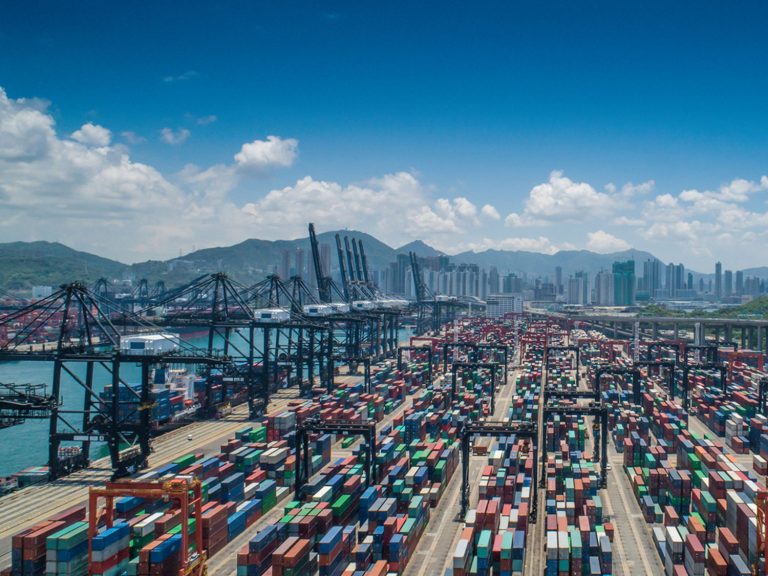
Date:
Container crisis continues from Asia to the rest of world
As Metro reported in last week’s supply chain bulletin, the availability of container equipment has become the primary supply chain issue for shippers and importers from China and Asia in general.
The lack of equipment is a key issue impacting both rates and supply chains across Asia, with some areas experiencing the shortages more severely, including the key southern Chinese ports of Ningbo, Yantian and Shanghai, while in Taiwan and Vietnam shortages are also acute, with inventory at times completely exhausted.
We understand that despite the huge demand for vessel space out of the Far East, some ships are not sailing at full capacity, because carriers cannot find the right equipment to utilise against the high booking demand.
Issues are not only being seen on the 40’ high-cube, but are now impacting 40’ standard dry boxes and 20’ containers too, as shippers book whatever equipment they can find, regardless of cost, to move their product.
The issue has been building for some time, with sustained high demand reducing equipment stocks, while vessels have been regularly omitting ports to collect empties, that would replenish these stocks. In addition with lockdowns and other disruption related to the pandemic, the turnaround of containers has extended up to twice the round trip transit resulting in containers being in the wrong place for reloading.
Severe operational delays at key European and trans-Atlantic ports since the summer has been a further contributory factor impacting the repatriation of empty containers. When vessels are in port, reduced operational capacity and terminal congestion means that vessels are not worked effectively and they are not able to unload/load as planned, which means that equipment remains where it is not needed.
Carrier efforts to lease more equipment is having little impact and orders for new builds from Chinese container factories will not increase stock availability before end of March, when they are built, ready and in service. Even then they need to be transferred to the areas of high demand where needed.
With the spot rate market at record unprecedented levels – rising 34% last week – having vessels leave with empty space because there is no equipment will be totally unacceptable to carriers and cargo owners, but with no surplus equipment areas anywhere in Asia, or Australasia, the carriers are unable to simply reposition to where they are needed, as containers are needed everywhere.
Securing scarce space before CNY is creating a sellers market, with carriers seeking premium rates to guarantee slots and equipment, far above standard rates for the time of year, with some shippers paying rates that would make your toes curl !
It is noteworthy that there have been less blank sailings from the carriers ahead of CNY. It is very likely that the reason for this is that they need every sailing they have from Europe and North America, to reposition empty equipment.
For some weeks carriers have been prioritising empty containers ahead of laden containers on the export trade lanes back into Asia, from areas in Europe and North America, where the empty containers are currently stuck.
The carriers prefer to forego revenue from a laden export container, to get the empty boxes back into circulation faster, to take advantage of the sky high spot rate markets in Asia. This in itself is then having an impact on exporters and creating further misery for shippers in all directions.
And, while it is incredibly bad right now, we are hopeful that the lines’ decision to blank less sailings over CNY and prioritise the return of empty containers will offer some ‘light’ as their actions will increase equipment availability and vessel capacity to return empties, which in turn may ease the severe equipment challenges currently being experienced.
Metro’s commercial experts monitor the container market from Asia continuously and are in constant contact with our origin teams for local assessments, so that they can react proactively to changing conditions and developments. We have a significant number of experts in Asia and UK operations managing shipments to consignment level with each now becoming a ‘project’ movement absorbing many hours of time.
While we may hope for more market stability this year, all the signs are that we will face another challenging time. Having closed off most of our contracts with partner carriers we are ahead of the market and well placed to deliver reliability and cost effective solutions based on a fixed validity pricing structure.
Protect your supply chain and budgets for 2021, by providing us with your forecasts now, so that we can secure you a deal for the year ahead, that has fixed validity and consistency in pricing.
Call Ian Barnes and/ or Grant Liddell to discuss the latest market situation and your plans for the year.
